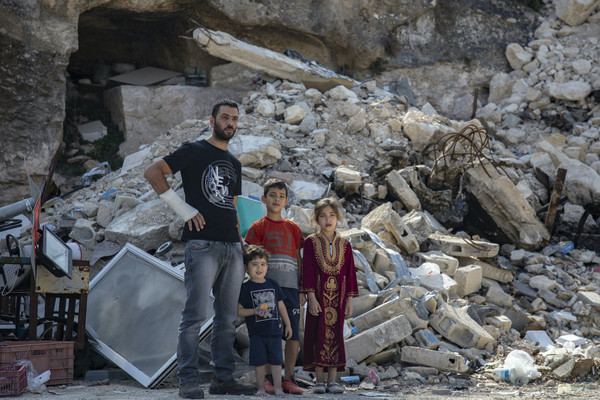The conflict between Palestine and Israel has endured for over three quarters of a century, leaving in its wake a harrowing path of devastation, loss, and unrealized aspirations. As we delve into the complexities of this deeply entrenched conflict, one undeniable aspect comes to the forefront: the enduring power imbalance that continues to exert its influence upon the lives of countless individuals ensnared in the crossfire.

The recent escalation in the conflict can be attributed to several key developments. The forced expulsions of Palestinian families from the Sheikh Jarrah neighborhood in East Jerusalem, driven by pro-settler organizations, ignited anger and protests. Tensions further escalated with clashes and Israeli police raids on the Al-Aqsa Mosque compound during Ramadan. Hamas issued an ultimatum for Israel to withdraw security forces, followed by rocket launches toward Israel; Israel responded with heavy aerial bombardment of Gaza. This deadly exchange of fire intensified the already-strained relations.
The tragic death toll continues to rise, leaving communities shattered and families torn apart. But looking at the numbers, it seems the scales of power heavily tip in favor of one side. According to Palestinian figures, at least 123 Palestinians have lost their lives at the hands of Israeli forces since the beginning of 2023 as of May 10, a stark increase from the 51 deaths during the same period last year. In comparison, 19 Israelis have lost their lives in the same time span. These figures paint a harrowing picture of the human cost endured by Palestinians in their struggle for the establishment of an independent Palestinian state.The glaring discrepancy in technological capabilities can be partially attributed for this imbalance. Israel possesses one of the most formidable militaries globally, supported by advanced defense systems that can effortlessly neutralize threats. Rockets launched towards Israel are often thwarted by their formidable defense system, leaving them largely unscathed. In contrast, the Palestinian territories, particularly the Gaza Strip, face significant economic disparities and a lack of substantial foreign aid. This leaves them exposed to Israeli military offensives without comparable defensive or counter-offensive resources, exacerbating their vulnerability.
The destruction is not limited to lives lost; the widespread devastation is evident in the numerous buildings that have been reduced to rubble. Gaza in particular has suffered immensely, with 139 buildings completely destroyed and over 500 more left partially damaged only within the week of airstrikes this May. Deliberate demolitions by Israeli authorities are also often carried out through policy implementations that state security or legal reasons, while Israeli settlements built in the West Bank perpetuate the systematic displacement of Palestinian families. According to Special Rapporteurs under the UN Human Rights Council, 132 Palestinian structures across 38 communities were demolished by Israeli authorities in January 2023. This serves as a stark example of the unequal political power at play.
Furthermore, it is essential to acknowledge the emergence of new far-right rhetoric from the Israeli government, which has added another layer of complexity to the already volatile situation. The new government in Israel has seen the rise of politicians who espouse extremist views, particularly concerning Palestinians. Some members of the new government have made statements that perpetuate a dehumanizing narrative about Palestinians, portraying them as lesser beings or threats to Israeli society. In a recent speech delivered in Paris, Israel’s Finance Minister Bezalel Smotrich outright denied the very existence of Palestinians and Palestine itself. With differences in positions already rooted deep within the relationship between Israelis and Palestinians, such rhetoric not only deepens divisions but also undermines prospects of meaningful dialogue and understanding.
The recent escalations in the Palestine-Israel conflict have starkly highlighted the significant influence of power dynamics on the trajectory of events and the narratives of both sides. As we witness the tragic loss of life and widespread destruction, it becomes crucial to address a fundamental question: When one side possesses such overwhelming advantage, what obligation does it have to exercise restraint? Beyond the religious, cultural, and territorial complexities that seem difficult to disentangle, it is imperative to address the profound power imbalances that have plagued this struggle for over three quarters of a century.

